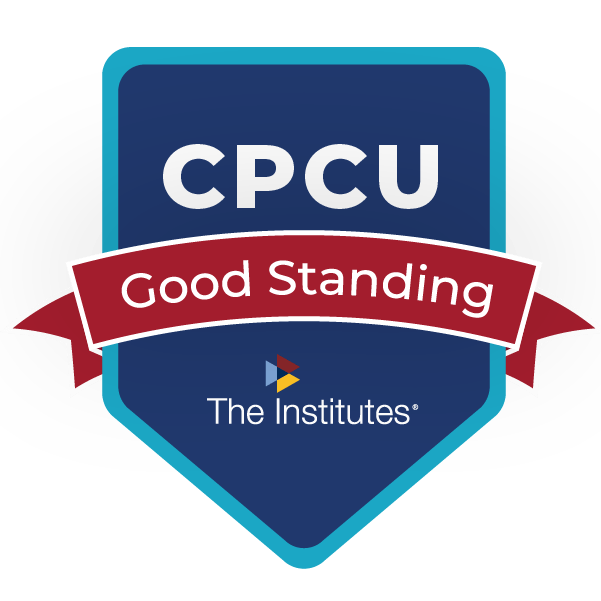Fast Annuity Stats
 June 13, 2016 – Some quick statistics we singled out from among the Key Findings of the 2013 Survey of Owners of Individual Annuity Contracts, conducted jointly by The Gallup Organization and Matthew Greenwald & Associates for The Committee of Annuity Insurers:
June 13, 2016 – Some quick statistics we singled out from among the Key Findings of the 2013 Survey of Owners of Individual Annuity Contracts, conducted jointly by The Gallup Organization and Matthew Greenwald & Associates for The Committee of Annuity Insurers:
When Do People First Buy Annuities?
47% purchased between age 50-64
38% purchased before age 50
14% purchased at age 65 or older
Who Owns Annuities? (By Gender)
51% Female
49% Male
Who Owns Annuities? (By Occupation)
12% Support Staff
14% Blue Collar or Service Worker
15% Foreman or Manager
15% Business Owner or Company Officer
34% Professional, such as, Doctor, Lawyer, or Teacher
Reasons for Purchasing Annuities?
90% view as a “safe purchase”
How Long Do People Keep Their Annuities?
93% still own the first annuity they bought
This last one is especially telling since people tend to hold onto the things they like. For this reason, we think your time would be well spent checking out the full survey to see how your peers go about making their retirement choices.
It’s one thing to see a television commercial about the prospective benefits of annuities in the retirement planning abstract.
Quite another to see how people who have already taken the annuity plunge truly feel about their decisions.
With a 90% chance of feeling “safe” and a 93% chance of feeling “satisfied” with an annuity purchase, odds are good you, too, can benefit from dedicating a portion of your retirement savings toward an annuity.
NOTE: The referenced survey is limited to individual annuity owners who purchased their own individual annuities using non-qualified (i.e after-tax) funds. Structured settlement annuity recipients ARE NOT counted among this pool of survey respondents.
Posted: June 13, 2016 | Category: Articles, Blog, Retirement | Comments Off on Fast Annuity Stats
Dream On, Don
June 3, 2016 – It’s been less than a week since I read about the abrupt death of one of the structured settlement industry’s greatest champions Don McNay and I’m still struggling to come to grips with this tragic news.
Sing with me
Don and I only ever met in person at industry functions a few times over the years but we were definitely kindred spirits. Close in age, we were connected by our mutual appreciation for the written word, our commitment to helping people secure their financial futures and our penchant for frequently choosing classic rock lyrics to express how we felt about something.
Sing for the years
A tireless promoter of things he believed in and seemingly a fan of everyone he ever met, he was your favorite uncle, teacher, mentor, coach and you-name-it all rolled into one.
It was impossible not to like, be inspired by and root for Don McNay.
Sing for the laughter
Driven and accomplished to levels most of us can’t even comprehend, Don was an unpretentious and unrepentant advocate of things he believed in, primarily “God, the Cincinnati Reds and not taking money in a lump sum.”
Sing for the tears
But probably Don’s most endearing quality was the way he encouraged so many others, yours truly included, at every opportunity.
For instance: Every time I posted anything on my firm’s social media sites, Don invariably was the first to “like” or share it.
Sing with me
Less than 48 hours before he died, Don shared my latest blog post with his very extended network as he prepared to head off to New Orleans for the Memorial Day weekend.
He didn’t have to do that. I never asked him to help me promote my business.
I guess he just wanted to.
Just for today
I miss Don already. I miss the engaging columns and books he’ll no longer be writing. I miss all the things I’ll no longer be able to learn from him.
He wasn’t ready to leave all of us any more than we were ready to lose him.
Maybe tomorrow
But I can’t help thinking that somewhere in the Great Beyond there’s a bunch of souls wondering about this new positive force of nature suddenly in their midst.
And what do you want to bet this “Son of a Son of a Gambler” who rarely wagered has already made fast friends of them all.
The good Lord will take you away
Dream on, my friend. I hope this post would have made you smile.
The Finn Financial Group extends its heartfelt condolences to the family of Don McNay and to all his personal and professional associates, affiliates and organizations who mourn his passing.
Posted: June 3, 2016 | Category: Articles, Blog, Structured Settlements | Comments Off on Dream On, Don
Structured Settlements or U.S. Treasuries for Better Yields?
May 27, 2016 – Yesterday the United States Treasury sold $28 billion worth of 7-year notes.
Probably safe to assume the collective wisdom of those doing the buying don’t believe rates are going to improve anytime soon. Otherwise, they’d sit on the sidelines and wait for a better bargain, wouldn’t they?
The 7-year Treasury yields were 1.652%.
Twenty-eight billion dollars.
One point six-five-two percent interest.
Combined, this seems a pretty good indication lots of investors are choosing safety and security over risk and aren’t anticipating any wholesale rate improvements anytime soon.
Too bad those folks can’t buy structured settlements directly since a structured settlement designed to mirror a 7-year Treasury is currently yielding about 2.15%.
In other words, when compared to Treasuries, a structured settlement would yield investors about 30% more money!
Apples to appelz
 United States Treasuries are widely considered the ultimate risk-free investment. Buyers know promises will be honored.
United States Treasuries are widely considered the ultimate risk-free investment. Buyers know promises will be honored.
Much of the same is often said about structured settlements.
Backed by some of the highest rated and most well capitalized life insurance companies in the world, structured settlements offer peace of mind to people who choose them because future payments are being promised by companies that have been in business an average of over 125 years.
Maybe they aren’t exactly the same color but it’s not a stretch to compare Treasuries to structured settlements.
Both pay interest that is 100% income tax-free and both are unmatched in terms of financial security.
To be clear, structured settlements aren’t guaranteed by the federal government. Insurance is, after all, regulated by the states. But with the many consumer protection laws in place for structured settlements and the state guaranty funds established, it’s hard not to draw safety and security parallels.
With structured settlements providing higher returns than Treasuries, those who qualify for them are uniquely positioned to take advantage of one of the best settlement options available.
Post-settlement asset preservation should always be a primary goal of anyone settling a personal injury claim.
By dedicating some portion of one’s recovery to a structured settlement, anyone settling an injury claim can feel confident they’re making a smart choice.
PS Works great for attorneys who structure their fees also!
Posted: May 27, 2016 | Category: Articles, Blog, Structured Settlements | Comments Off on Structured Settlements or U.S. Treasuries for Better Yields?
Retirement Surprise
April 20, 2016 – “Lynn” called me recently for help with a few structured settlement annuities I helped place on her behalf about five years ago.
Our firm occasionally fields calls from former clients who are moving, changing beneficiaries or banks and simply need help submitting the correct documents to make sure their money arrives on time as scheduled.
I always enjoy these exchanges because I get great feedback on the client’s structured settlement or retirement annuity experience several years removed from their decision.
Back in 2011, Lynn chose to structure a portion of her automobile accident claim settlement as it was resolving. Still working at the time, she liked the idea of deferring some of her settlement proceeds into future guaranteed tax-free income designed to coincide with her planned retirement a few years down the road.
With retirement now just a few weeks away and her first annuity payments scheduled to begin, she needed to fill out the appropriate EFT forms so her funds could be automatically deposited into her chosen bank so her pension and structured settlement cash flows would be properly aligned.
One of the questions on the standard EFT form had to do with tax withholding. She wasn’t sure which box to check when asked whether or not to withhold taxes having completely forgotten that structured settlement payments are 100% income tax-free when paid as a result of a personal, physical injury.
 When I reminder her of this fact, her response was priceless.
When I reminder her of this fact, her response was priceless.
“YAAAYYYYYYY!” she involuntarily and quite enthusiastically shouted.
Her excitement was contagious and I smiled as she offered all the reasons this was such welcome news:
Combined with her retirement income and Social Security, her combined effective tax rate in retirement would be lower;
It was an empowering sense of freedom and relief from having to pay higher taxes;
With prices increasing, not having to pay taxes on this income would help her money go further.
Her parting sentiment as we were hanging up is the kind of thing that always makes me feel so great about my career choice:
“You absolutely made my year!”
Glad to be of service Lynn. Thanks for sharing. Knowing I played some small part in you looking so forward to a happy retirement makes MY year!
Posted: April 20, 2016 | Category: Articles, Blog, Retirement, Structured Settlements | Comments Off on Retirement Surprise
Indexed Annuity Surge Continues
February 29, 2016 – According to a recent InvestmentNews article citing a LIMRA Secure Retirement Institute report, 2015 saw a 13% increase in indexed annuity purchases over the prior year to a record $54.5 billion.
To put this figure into perspective, Starbucks’ Fiscal 2015 Annual Report indicates $54.5 billion is just $3 billion MORE than the coffee giant’s total net revenues . . . SINCE 2012!
When was the last time you saw a Starbucks where someone wasn’t waiting in line?
Not that there’s any direct correlation between retirement income distribution planning and the caffeinated brew but it speaks to the ongoing (and growing!) popularity of both and there are some similarities:
Both are optional purchases people make daily.
Each can be tailored to individual preference.
Consumers enjoy the end result despite any long line anxiety (or, in the case of annuities, the application process).
Case Study
(NOTE: For compliance purposes, this case study is a hypothetical example presented for educational purposes only)
Consider the 60 year-old freelance consultant, still in demand, who plans to work another ten years in order to maximize his Social Security benefits.
He has no pension.
Still reeling from the aftereffects of the Great Recession, his greatest fear is losing his remaining accumulated wealth so he simply “parks” the bulk of his funds in a safe, guaranteed account, currently paying about 3.0% a year.
The Dilemma: With ten years to go before he plans to start drawing this down to live off of, how does he earn a higher return without sacrificing safety?
The Solution: Dedicating a portion of his portfolio to an Indexed Annuity from a highly rated carrier with a Guaranteed Lifetime Income Benefit (GLIB) Rider that does this:
A. Guarantees his account will be credited 7.0% per year until he chooses to start drawing it down.
B. Guarantees he will then receive 5.4% of the accumulated value for as long as he lives.
C. Guarantees he’ll never lose a penny.
All things considered – safety, security, guarantee, risk, capital preservation, legacy and life expectancy among them – this solution complements his retirement income planning strategy nicely since only Social Security, pensions and annuities can guarantee income for life.
Indexed annuities, like coffee, aren’t for everyone.
But they are undeniably an efficient and effective method of distributing a portion of one’s accumulated wealth over a lifetime of unknown duration.
Converting assets to income when one’s work life comes to an end needs to be a top priority for those seeking retirement planning advice.
And indexed annuities can fill that cup nicely.
Image courtesy of Stuart Miles at FreeDigitalPhotos.net
Posted: February 29, 2016 | Category: Articles, Blog, Retirement | Comments Off on Indexed Annuity Surge Continues
Structured Settlement Markets Ranked Among World’s Largest Insurers
February 18, 2016 – It’s always nice when the structured settlement companies active in the structured settlement marketplace make the news for their superior financial size and strength.
 Such was the case when half of the structured settlement companies we currently represent ended up on Best Review‘s recently published 2014 rankings of the world’s largest insurers based on non-banking assets.
Such was the case when half of the structured settlement companies we currently represent ended up on Best Review‘s recently published 2014 rankings of the world’s largest insurers based on non-banking assets.
Best Review is a monthly insurance magazine published by A.M. Best Company, an independent rating agency.
Of the top 25 companies listed, only four are domiciled in the Unites States; however, these four dominate the top half of the rankings accounting for one-third of the top 12 spaces.
These exceptional American companies all offer structured settlements.
These four companies listed below are very active in the structured settlement arena and their inclusion on this list reassures clients seeking security that these solid companies have sufficient assets to meet their future obligations. (Assets rounded to nearest billion dollars)
3. MetLife Inc. ($902 billion)
4. Prudential Financial Inc. ($767 billion)
9. Berkshire Hathaway Inc. ($526 billion)
12. American International Group, Inc. ($516 billion)
Congratulations and THANK YOU to MetLife, Prudential, Berkshire Hathaway and American General Life (AIG’s life company affiliate) for continuing to demonstrate the financial discipline necessary to support the future commitments we’ve made to our clients.
With all of the volatility rattling investors so far in 2016, it is indeed a “time for strength” and these four companies, along with the rest of the excellent companies we represent, have positioned themselves well to honor their future structured settlement commitments.
Image courtesy of Stuart Miles at FreeDigitalPhotos.net.
Posted: February 18, 2016 | Category: Articles, Blog, Structured Settlements | Comments Off on Structured Settlement Markets Ranked Among World’s Largest Insurers
I Prefer The Revenant Bear
January 14, 2016 – If you haven’t yet seen The Revenant, I won’t spoil the movie for you by telling you all about it.
But surely you’ve seen the commercials advertising the film which earned Golden Globe Awards for Best Motion Picture, Drama and Best Actor in a Motion Picture, Drama for its star Leonardo DiCaprio and is poised to score big at the Academy Awards having just picked up 12 Oscar nominations.
So you probably know that a ferocious bear somehow figures into the plot.
Having seen the movie (twice) and the gruesome bear scene in all its gory, incredible special effect detail and then thinking about 2016’s stock market gyrations, I couldn’t help wondering if the film represents some kind of twisted cosmic foreshadowing of what investors can expect in the coming year.
If you put any stock (pun intended) into what Societe Generale uber-bear Albert Edwards thinks, the S&P 500 is heading into a period of escalated decline which could see the value of the famous index drop by 75%.
That was not a typo.
Given the choice between what he’s predicting and The Revenant, I think I’d rather face the same bear Leo did than go through an Even Greater Recession with my money exposed this time around.
 Safety First and Sleeping Well
Safety First and Sleeping Well
You know who doesn’t have to worry about whether or not Edwards is right?
People who are locked into certain types of annuities: structured settlement annuities, single premium immediate annuities and fixed indexed annuities (FIA).
Their payments are guaranteed.
Our firm has clients in all three and they aren’t (and won’t) be calling us in a panic if the market bears emerge in full force.
That “ol’ bar” can sniff around their money all he wants and our clients’ guaranteed income checks will arrive in the mailbox (or via EFT deposit) on time as promised.
Temporary Scary Interlude
I remember one call I received in the fall of 2008 from a plaintiff attorney client who regularly structured his attorney fees (and still does).
A few of his structured attorney fees were placed with American General Life whose parent, American International Group (AIG), was among those companies on the brink of collapse.
AIG’s involvement in the credit default swap game (aka house of cards) was probably the most troubling of all the financial institutional failures during that time because a) it should have known better and b) it was a H-U-G-E company whose collapse would lead to ultimate decimation of the entire planet as we knew it.
85 billion Federal Reserve loan dollars and two years later, the AIG disaster was averted and the US taxpayers even made a tidy profit off of its bailout.
IMPORTANT NOTE: It bears (no pun intended) mentioning that American General Life was never at risk. AIG’s woes were caused by its holding company.
American General has been honoring its commitments for over 160 years and maintains a superlative balance sheet with over 90% of its portfolio in cash or fixed income assets of primarily investment grade bonds. The real kind. NO CREDIT DEFAULT SWAPS!
State insurance regulations prevent life companies from taking the kinds of risks that led to the Great Recession and we’re proud to represent this excellent life insurance company. Neither we nor our clients ever had reason to worry about its ability to pay.
I assured my client that his structured attorney fee was safe and that it would continue paying well into the future (which it has and will).
Back to Safety First and Sleeping Well
A Special Needs Trust (SNT) fiduciary told me not long ago that structured settlement payments flowing into the SNTs were the only thing that kept his clients’ accounts viable during the depths of the Great Recession.
This conversation was a timely reminder it’s almost ALWAYS smart for special needs clients settling personal injury claims to consider structuring a good portion of their recovery. SNTs and structured settlements work very well together.
Finally, clients of ours who chose fixed annuities and FIAs for some of their retirement allocations awhile back may have missed out on some of the market gains of recent years. But they’re locked in now and won’t lose anything if Mr. Edwards ends up being right.
(Remind me to talk about the fallacy of averages in a future post)
Don’t Panic But Be Safe
Just because one guy says “the sky is falling” doesn’t mean it’s actually going to happen today or any day soon.
Recessions are regularly occurring events, though, so whether it’s a correction or a catastrophe, the market will definitely drop.
Some day.
Then it will go up again.
Some day.
But since nobody truly knows when either will materialize, if you want to protect yourself from the drops that will inevitably occur, take the time to learn about annuities. They work!
Don’t panic. Just take time to consider where you are, where you want to end up and most important:
Don’t risk money you cannot afford to lose.
Image courtesy of [email protected]
Posted: January 14, 2016 | Category: Articles, Blog, Retirement, Structured Settlements | Comments Off on I Prefer The Revenant Bear
“You Saved My Life”
January 13, 2016 – As a structured settlement expert for nearly twenty-five years, I’ve always been grateful I chose a career path that allows me to help people. Not everyone has that honor or special responsibility.
I t’s a privilege assisting those who need your help.
t’s a privilege assisting those who need your help.
People whose lives have been turned upside down because of an automobile accident, workplace injury or assorted other types of losses lend themselves to a need for qualified structured settlement financial expertise.
Meeting clients at a time when they are most vulnerable, many still struggling to adjust to life following disabling injuries, always humbles me since I realize that any day the same fate could befall me or anybody else.
Because of the nature of the business, however, clients rarely have the need or desire to stay connected with the very individuals – attorneys, structured settlement professionals and other experts alike – who helped them through their claims resolution process.
Moving on to a new life by shedding all reminders of an unhappy past event becomes paramount.
But since structured settlements represent long-term financial obligations that stretch out for many years, often over a lifetime, we occasionally field calls from those we’ve helped. Sometimes clients need to notify the life companies of a change of marriage or residency status, change a beneficiary or sometimes they just misplace their structured settlement contract and need to secure a replacement copy.
I like when those calls come in because it gives me a chance to talk with the client about how they may have benefited from the help I provided years earlier. It’s a great opportunity to learn.
One such call came in today.
“Ryan” called because he needed to change bank accounts for one of the structured settlement streams he was receiving via direct deposit. While I looked up the details of his contract, we had a chance to catch up a bit.
NOTE: I’m overly protective of all my clients and NEVER provide their real names or details of their settlement for obvious privacy reasons.
I asked Ryan some open ended questions about how things had been going since I helped him settle his Workers’ Compensation claim six years earlier.
Well, he didn’t need much prodding. He sounded very happy. As he talked, I listened and jotted down some of the comments he made:
“(Choosing a structured settlement) was the greatest decision of my life.”
“If I’d have taken that lump sum (instead of the structured settlement) it would have been long gone by now.”
“YOU SAVED MY LIFE!”
This last one really got me.
He actually said I saved his life!
The structured settlements industry came into existence based on a belief that we can make an essential difference in people’s lives.
The universal support they enjoy – from disability advocacy groups, the insurance industry and the plaintiff and defense bars to members of Congress on both sides of the aisle – is strong testament to the high value society places on structured settlements.
We help people. That’s what we do.
And sometimes we even save lives it appears!
Oh, I realize Ryan was speaking figuratively about me saving his life since I didn’t perform emergency room surgery, pull him from a burning building or extract him from hostile territory in a war zone with enemies closing in.
All I did was to do my job by helping him design a structured settlement payout plan tailored to meet his anticipated future needs when he was in the midst of settling his workers’ compensation claim.
But if he feels that saved his life, who am I to argue with him?
Image courtesy of cooldesign at FreeDigitalPhotos.net
Posted: January 13, 2016 | Category: Articles, Blog, Structured Settlements | Comments Off on “You Saved My Life”
Ziggy’s Wall Street Oddity
 January 12, 2016 – With tributes to the late rock icon David Bowie continuing to pour in across the globe, the debate about which David Bowie song was the greatest will likely rage on for a few weeks at least.
January 12, 2016 – With tributes to the late rock icon David Bowie continuing to pour in across the globe, the debate about which David Bowie song was the greatest will likely rage on for a few weeks at least.
Whether you liked his music or didn’t, one irrefutable truth follows his legend:
David Bowie was a trendsetter.
Not content to follow the musical path of most of his predecessors, he expanded the notion of rock music by combining theatrical elements to his shows and developing concept albums at a time when the industry brass were still universally focused on hit singles.
He foresaw many social changes taking shape long before most as evidenced by his early creation of androgynous characters which bridged the gap between what society considered acceptable then and what it would accommodate years later.
The Rise and Fall of Ziggy Stardust and the Spiders from Mars changed the trajectory of rock music and arguably society as well. In addition to making my personal Top Ten list, “Ziggy Stardust” is generally regarded as one of the best albums of all time by rock critics.
Bowie Bonds
But Wall Street pioneer? Who knew?
Bowie’s trendsetting ways didn’t stop with the world of art and fashion. He was a financial innovator as well.
In 1997, David Bowie became the first to create securities backed by future music royalties. Other artists followed suit all meeting with varying degrees of success.
This WSJ YouTube Video gives a great summary of the story.
So, Rest in Peace Tall Thin Duke. Thank you for ALL your innovations.
Especially your music which lives on.
Image courtesy of David Schrock, an artist and personal friend living in Ft. Lauderdale. The painting is for sale.
Posted: January 12, 2016 | Category: Articles, Blog, Retirement | Comments Off on Ziggy’s Wall Street Oddity
The Next Big Short
January 11, 2016 – I watched the Screen Actors Guild and Golden Globe Awards nominated film The Big Short over the weekend.
The movie made me feel anxious all over again.
Prior to the Great Recession, investors were accustomed to seeing their account values rise and fall with some degree of regularity when exposed to the stock market whether doing so directly or through mutual funds.
Ups and downs notwithstanding, the trend line was always upward.
 “Markets will always have ebbs and flows,” financial professionals reminded us.
“Markets will always have ebbs and flows,” financial professionals reminded us.
But The Big Short only reminded me it was all ebbs back then.
The film brought back all those feelings of dread that I remember feeling when I saw my own 401(k) balance reduced by more than 60%.
Those kinds of wholesale losses were Armageddon-like. And it hurt!
As the movie and this 60 Minutes episode from April, 2009 remind us, this market crash affected EVERYBODY. Even if you didn’t invest in the market yourself, you were affected.
Could It Happen Again?
According to Michael Burry, the protagonist of The Big Short portrayed by Christian Bale and the first to see the housing debacle coming, “we are right back at it.”
That’s right. As unimaginable as it seems, another financial catastrophe could be on the horizon according to this prescient economic trend seer.
Nobody can accurately predict the future, or course. But are you willing to bet against this guy after what he saw coming?
So, go watch The Big Short if you haven’t already to remind yourself how close the financial world came to irreversibly imploding.
(Suggestion: Bring a handful of Tums along with you. You might need them!)
Then, think about your own future and think about how much money you can afford to lose.
Safety First
You know who didn’t lose money during the Great Recession?
People with money in guaranteed accounts or any of the clients I’ve worked with over the past twenty-five years who were receiving or were promised guaranteed income from structured settlements and fixed indexed annuities (FIAs) didn’t lose money.
Market risk is inherent in the stock market.
Market risk is absent in a properly designed structured settlement or FIA retirement annuity.
This doesn’t mean you should never invest in the stock market or you should always choose annuities. As a practical matter, a combination of annuities plus traditional investing often results in the optimal outcome for most people.
But it’s shocking how many people often lose site of one of the cardinal rules of financial decision making:
Don’t risk money you cannot afford to lose
Despite what some who make broad, unflattering statements about them say, life annuities are proven to be the “most cost effective and least risky asset class for generating retirement income for life” and I have met very few people who couldn’t benefit from having guaranteed lifetime income.
Cost effective. Least risky. Sounds like a recipe for happiness to me.
So if you’re ready to settle a personal injury claim, keep whatever cash you think you’ll need in the next few years and whatever you’d be comfortable losing.
Invest that money.
Take the rest and set up a structured settlement to help meet your basic living needs.
If you’re focusing on your retirement assets, try this simple math assuming a typical working life:
W/R, where,
W = Number of years since you started working
R = Number of years until you plan to retire
If the resulting number is less than 1.0, you’ve probably got enough time to weather any storms even if we do enter into an Even Greater Recession.
If the number is 1.0 or greater, watch out! You should give serious consideration to limiting your exposure to the market. The larger the number, the less time you’ll have to make up what you lose if the market tanks again.
BONUS: Paradoxically, by annuitizing a portion of your retirement assets to meet your known cash flow needs, you’ll be able to invest some of your portfolio in the market with less worry.
Everyone needs guaranteed income. Don’t wait until it’s too late to get yours.
Postscript
I plan to vote for Christian Bale when I fill out my Screen Actors Guild Awards ballot in a few weeks. He was that good in his supporting role.
(Disclosure: As you can see from my IMDb profile, it’s been a little while since my network television debut and I remain, quite possibly the most under-exposed professional actor member of the Screen Actors Guild)
But I’m not voting for The Big Short although it was deserving of its SAG Award nomination.
And even if I were a Hollywood Foreign Press Association member, I still wouldn’t have used my Golden Globe Best Comedy or Musical vote on it.
Call me old-fashioned, but I just don’t think there’s anything all that funny about seeing people lose their life’s savings.
Photo courtesy of winnond at FreeDigitalPhotos.net
Posted: January 12, 2016 | Category: Articles, Blog, Retirement, Structured Settlements | Comments Off on The Next Big Short



















